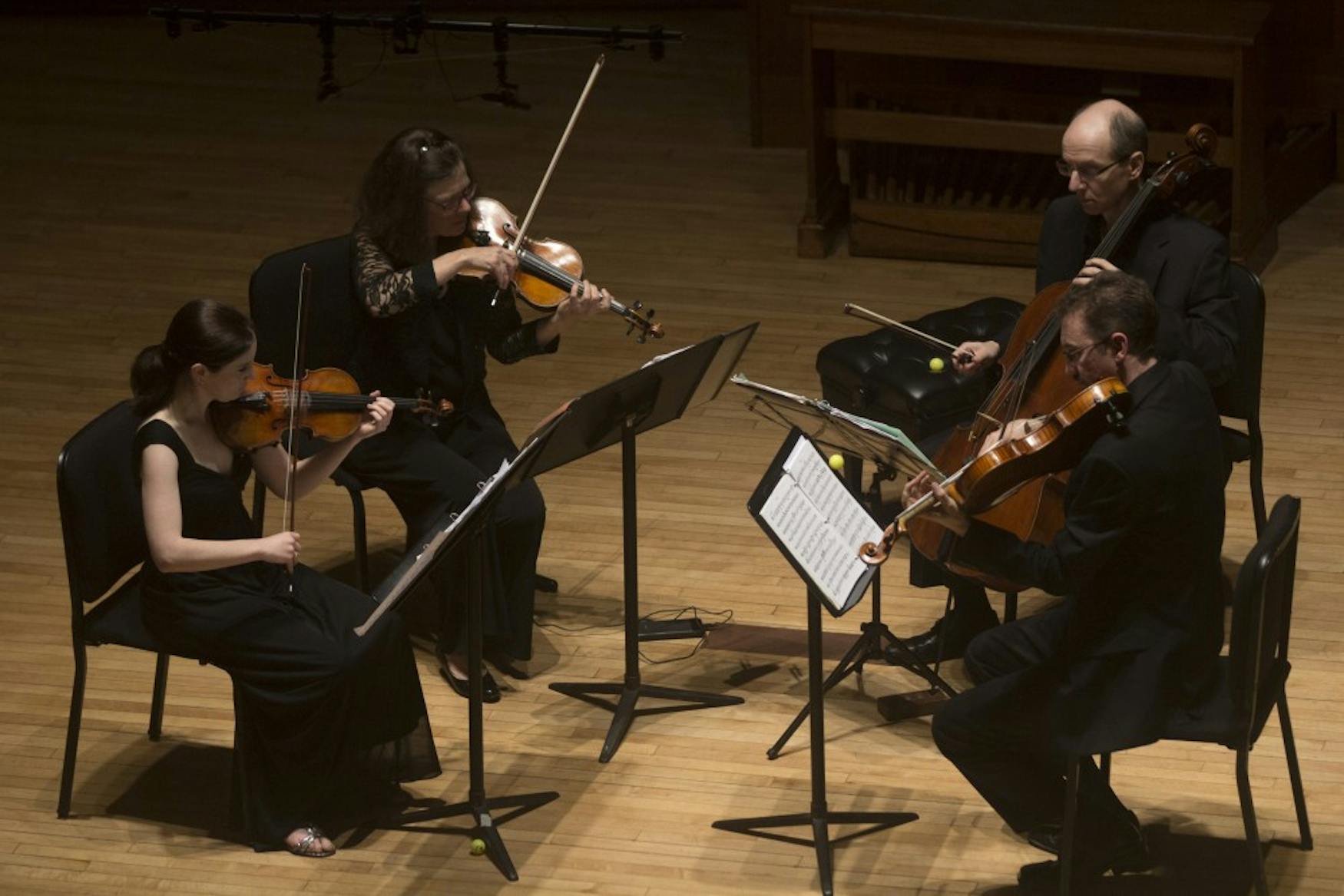Lydian String Quartet goes avant-garde
Colors of Russia, the Lydian String Quartet concert held this past Saturday, was unlike any other string quartet concert. While classical music concerts usually attract an elderly crowd, this concert drew a much more diverse array of concert-goers. Some members of the younger crowd appeared to be students merely there to fulfill a class requirement, but many were also there voluntarily with friends. Parents and even younger siblings came to enjoy the Lydian’s performance.
The audience was in for a bit of a suprise when the group started playing Sofia Gubaidulina’s “String Quartet No. 4.” All lights in the Slosberg Recital Hall went out. The musicians only had small lights at their music stands with which to read their music — otherwise, it was pitch black. Long beams of colored light reflected to the back wall. The musicians started playing, utilizing both conventional and alternative ways of playing their instruments ,such as using the wooden back of the bow instead of the hairs of the string and at one point using a ping pong ball on a spring to tap the strings instead of a bow. The piece began to sound like spiders crawling throughout the concert hall and felt as though all typical elements of music — such as rhythm, harmony, melody, dissonance — had been stripped away.
The only part of the piece that brought me back to a concert hall instead of a spider-infested forest was seeing violist Mark Berger physicalize the beat through his swaying and breathing. There did not seem to be a detectable downbeat in this piece, and the group clearly communicated well and was breathing together. “String Quartet No. 4.” explored a wider range of what this family of instruments is capable of through alternative styles of playing, normal bowings, pizzicato (plucked strings) and even pre-recorded music intermittently looping throughout the live performance. The use of silence was chilling in the best way possible. This piece was experimental with every aspect of chamber music, including lighting, and staging, but every aspect of Gubaidulina’s experiment felt purposeful and meaningful.
The hall then returned to normal lighting with more standard string quartet music by Sergei Prokofiev and classical Beethoven in the second act. The end of the first act was magnificent to say the least. Prokofiev’s piece finished with flair as all four of the musicians ended by following through on their last bow stroke with their arms and bows high in the air. The power in the room compelled the entire audience to get out of their seats to give the group a standing ovation, with many hollering in the recital hall. It was a truly moving piece played by expert instrumentalists.
Each musician demonstrated complete mastery of their instrument, playing as though the wood were an extension of their arm instead of an object. Berger’s fingers moved quickly and precisely on his viola; it looked like it might have been in fast forward as he scaled from the top of his register to the bottom and back with ease. Cellist Joshua Gordon could sound like a blaring horn in one section and a delicate bird in another and everywhere in between. The group’s communication is what really made the concert so exceptional: They were completely in sync with each other. Berger and the first violinist, Andrea Segar, danced together, completely in sync while sitting directly across from eachother. The second violinist, Judith Eissenberg, made high notes soar and ring out beautifully — even though they were so impossibly high, and any other player would have made them shrill beyond measure.
The most impressive aspect of the night was the feeling that the quartet’s sound did not come from only four instruments. At times, it felt like it could have been an entire orchestra playing. The chords they played together resonated through the concert hall, creating an intense energy and sound.



Please note All comments are eligible for publication in The Justice.